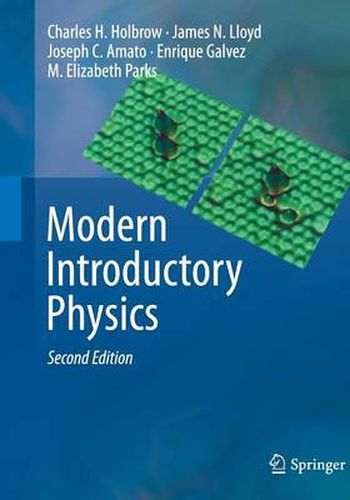Readings Newsletter
Become a Readings Member to make your shopping experience even easier.
Sign in or sign up for free!
You’re not far away from qualifying for FREE standard shipping within Australia
You’ve qualified for FREE standard shipping within Australia
The cart is loading…






This title is printed to order. This book may have been self-published. If so, we cannot guarantee the quality of the content. In the main most books will have gone through the editing process however some may not. We therefore suggest that you be aware of this before ordering this book. If in doubt check either the author or publisher’s details as we are unable to accept any returns unless they are faulty. Please contact us if you have any questions.
Thisbookgrewoutof anongoing e?orttomodernizeColgate University’s three-term,introductory,calculus-level physicscourse. Thebookisforthe ?rst term of this course and is intended to help ?rst-year college students make a good transition from high-school physics to university physics. Thebookconcentrates onthephysicsthatexplainswhywebelievethat atoms exist and have the properties we ascribe to them. This story line, which motivates much of our professional research, has helped us limit the material presented to a more humane and more realistic amount than is presented in many beginning university physics courses. The theme of atoms also supports the presentation of more non-Newtonian topics and ideas than is customary in the ?rst term of calculus-level physics. We think it is important and desirable to introduce students sooner than usual to some of the major ideas that shape contemporary physicists’ views of the nature and behavior of matter. Here in the second decade of the twenty-?rst century such a goal seems particularly appropriate. The quantum nature of atoms and light and the mysteries associated with quantum behavior clearly interest our students. By adding and - phasizing more modern content, we seek not only to present some of the physics that engages contemporary physicists but also to attract students to take more physics. Only a few of our beginning physics students come to us sharply focused on physics or astronomy. Nearly all of them, h- ever, have taken physics in high school and found it interesting.
$9.00 standard shipping within Australia
FREE standard shipping within Australia for orders over $100.00
Express & International shipping calculated at checkout
This title is printed to order. This book may have been self-published. If so, we cannot guarantee the quality of the content. In the main most books will have gone through the editing process however some may not. We therefore suggest that you be aware of this before ordering this book. If in doubt check either the author or publisher’s details as we are unable to accept any returns unless they are faulty. Please contact us if you have any questions.
Thisbookgrewoutof anongoing e?orttomodernizeColgate University’s three-term,introductory,calculus-level physicscourse. Thebookisforthe ?rst term of this course and is intended to help ?rst-year college students make a good transition from high-school physics to university physics. Thebookconcentrates onthephysicsthatexplainswhywebelievethat atoms exist and have the properties we ascribe to them. This story line, which motivates much of our professional research, has helped us limit the material presented to a more humane and more realistic amount than is presented in many beginning university physics courses. The theme of atoms also supports the presentation of more non-Newtonian topics and ideas than is customary in the ?rst term of calculus-level physics. We think it is important and desirable to introduce students sooner than usual to some of the major ideas that shape contemporary physicists’ views of the nature and behavior of matter. Here in the second decade of the twenty-?rst century such a goal seems particularly appropriate. The quantum nature of atoms and light and the mysteries associated with quantum behavior clearly interest our students. By adding and - phasizing more modern content, we seek not only to present some of the physics that engages contemporary physicists but also to attract students to take more physics. Only a few of our beginning physics students come to us sharply focused on physics or astronomy. Nearly all of them, h- ever, have taken physics in high school and found it interesting.